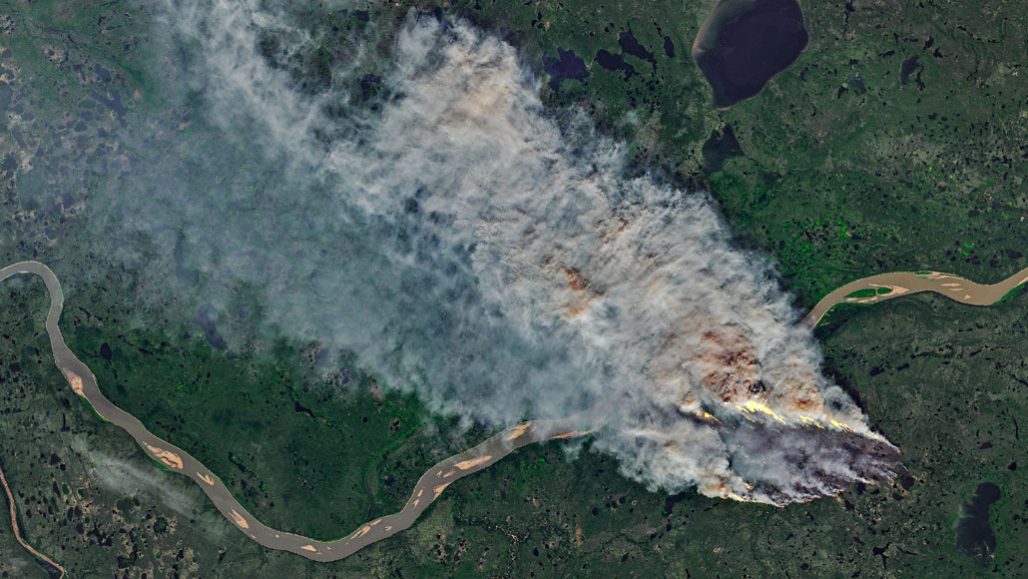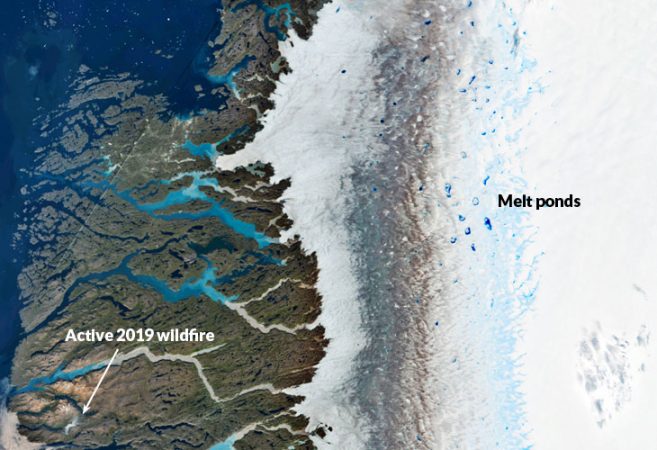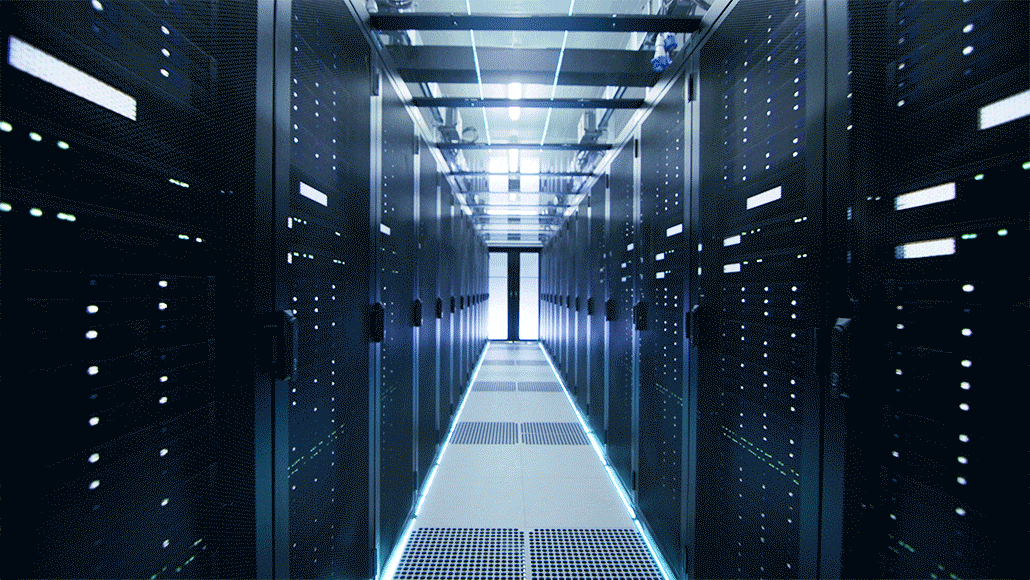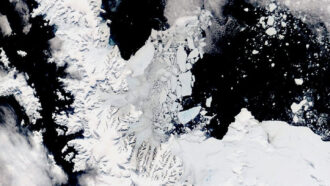Record heat is burning the Arctic and melting Greenland’s ice
Wildfires are pumping vast amounts of carbon dioxide into the air, which could make the problem worse

Wildfires near the Mackenzie River in Canada’s Northwest Territories. A European Space Agency satellite, called the Copernicus Sentinel-2, snapped this image on July 27.
Pierre Markuse/Flickr (CC BY 2.0)
Wildfires raged across the Arctic this summer. Record-high temperatures and strong winds fueled those fires. And those fires are occurring in greater numbers than ever recorded.
In Siberia alone, hundreds of wildfires spanned about 3 million hectares (7.5 million acres) of land. Satellites captured images of those fires on July 28. Across Alaska, as many as 400 wildfires were burning as of mid-July. The Arctic’s heat is also melting Greenland’s ice at an alarming rate.
The size and intensity of the June 2019 wildfires were greater than any seen in the past 16 years. That’s how long the European Union’s Copernicus Atmosphere Monitoring Service, or CAMS, has been tracking global wildfire data. This July’s numbers “have been of similar proportions,” says Mark Parrington. He’s a senior scientist at CAMS in Reading, England. “I’ve been surprised at the duration of the fires in the Arctic Circle, in particular,” he says.
Wildfires most often develop in the Arctic in July and August. They’re typically sparked by lightning. But this year, unusually hot and dry conditions in the Northern Hemisphere in June made the problem worse. That brought the fire season to an earlier-than-usual start. The World Meteorological Organization (WMO) reported this on July 12.
High temperatures and little Arctic rainfall almost certainly played a role in the July wildfires as well, Parrington says.
Heat and fire
In Alaska, temperatures reached as high as 32.2° Celsius (90° Fahrenheit) on July 6. That broke the state’s previous heat record.
June temperatures also were higher than usual in parts of Siberia. That’s in northern Russia. Average temperatures there were almost 10 degrees Celsius higher than the averages from 1981 to 2010. Also in June, more than 100 intense wildfires raged within the Arctic Circle.
Greenland certainly has been sweltering. The island lost nearly 200 billion tons of ice in July. That’s according to the Danish Meteorological Institute. On July 31, 56.5 percent of Greenland’s ice sheet was showing signs of melting, reports Ruth Mottram. She’s a glaciologist (Glay-see-OL-oh-gizt). She studies glaciers at the Danish Meteorological Institute in Copenhagen.

August 1 images from the Copernicus satellite show multiple melt ponds on Greenland. They also show burn scars on the island from a recent fire and smoke from an active fire.
Arctic blazes are not only scorching vast areas of Earth. Those flames also are releasing large amounts of carbon dioxide (CO2). June’s fires alone released more than 50 metric megatons of CO2, the WMO said. That’s more than the amount released, or emitted, by all June fires combined from 2010 to 2018.
Total CO₂ emitted from July’s Arctic wildfires is estimated at about 79 megatons, Parrington says. That’s double the emissions from July 2004. Until now, that had been the previous record-setting month. The year 2004 also set an annual record. Total Arctic wildfire CO₂ emissions hit about 110 megatons that year. This year has already smashed that record.
People and machines
Emissions of CO₂ and other greenhouse gases are responsible for modern global warming. Most increases in greenhouse gases are caused by human activities. These gases have already warmed the planet by 1 degree C (1.8 degrees F) above levels seen before the Industrial Revolution.
Temperatures in the Arctic are increasing twice as fast as the global average. That rapid warming has added to the growth and persistence of wildfires there.
Carbon dioxide emissions from wildfires in the Arctic in July, 2003–2019

Arctic wildfires are expected to become more common as the planet warms. There’s geologic evidence to support that. Layers of black charcoal have been found in sediments in the Canadian Arctic. That suggest wildfires frequently raged through the region during the Pliocene Epoch. But that was some 3 million years ago.
Back then, global atmospheric CO₂ levels were between 350 and 450 parts per million. Today’s measurements are similar. In June, CO₂ levels averaged 413.92 ppm. That’s according to data collected at the Mauna Loa Observatory in Hawaii.
Meanwhile, the frequent winter warm spells, insect outbreaks and wildfires are also causing problems for Arctic plants. Many have lost their resistance to freezing. This has caused them to dry out and die. Large parts of the Arctic have turned brown. That, in turn, has upped the region’s risk of wildfires.
Normally, the area’s icy peat-filled lands are soggy enough to be fire-resistant. But those lands are thawing and drying out. Once set ablaze, carbon-rich peat can burn for months. This releases large amounts of CO₂ back into the atmosphere. And that fuels even more warming.







